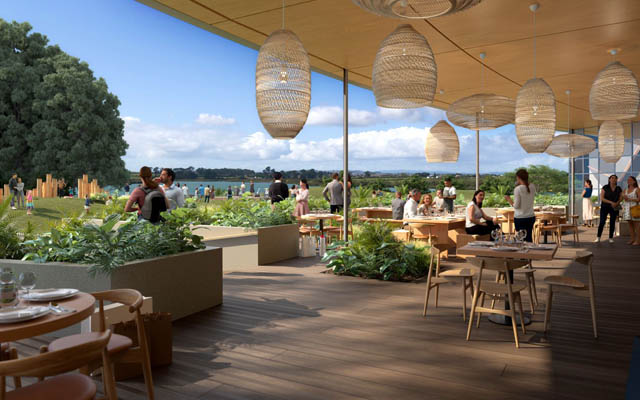Auckland Airport has reaffirmed its commitment towards building an integrated domestic and international terminal, as well as developing a number of key surrounding projects such as a new Transport Hub and outlet shopping destination Mānawa Bay, all of which will amount to a significant investment of around NZ$3.9 billion (US$2.5 billion).
The terminal integration programme – a significant part of the airport’s wider 10-year-capital programme – will bring domestic travel and international travel together under the same roof for the first time since 1977, via an expansion at the eastern end of the existing international terminal building.

Set to open between 2028 and 2029, Carrie Hurihanganui, Auckland Airport’s chief executive, said that the new integrated terminal “will make Auckland Airport fit for the future”, and provide an improved experience for travellers.
Domestic jet to international transfer will involve a brief five-minute indoor walk, while state-of-the-art check-in facilities for both domestic and international travellers will save traveller time and reduce friction at either end of a flight. The Transport Hub on the doorstop of the international terminal will also offer links to public transportation.
Airlines will be supported by new gates and other facilities to help them speed-up turn-around processes.
The new combined terminal will add floor space across two levels to the existing international terminal building, with the wider integration programme including significant upgrades to airfield pavement and underlying utilities. Some 2,000 additional jobs will be created as a result of the project.
The airport has also set its eyes firmly on a low carbon future, and is investing heavily in sustainability.
“We have worked very closely with major airlines to understand their needs and requirements, including the investment they’re making in larger domestic aircraft, and their planned future low carbon aircraft. We are supporting airlines by installing ground power units at each gate to supply power to aircraft, helping to reduce fuel use,” elaborated Hurihanganui.
Along with ground power units for aircraft, the upgraded airfield surrounding the new combined terminal will provide charging for electric ground handling equipment and vehicles. Design and construction materials for the combined terminal will be selected to reduce the building’s carbon footprint as much as possible, alongside a focus on waste minimisation and water efficiency.
She noted: “Without the right airport infrastructure, any airline aspirations to a low carbon future will not be achieved.”
While the new combined terminal is under construction, domestic travel will continue to operate from the existing domestic terminal. Hurihanganui noted that facilities such as bathrooms, helpdesks and dwell spaces in the existing domestic terminal will also undergo an uplift to ensure travellers remain comfortable.
One of Auckland Airport’s other developments is Mānawa Bay. Currently under construction and set to be completed late 2024, Mānawa Bay will comprise 100 retail shops, an expansive al fresco space, a play zone for kids, and a dining precinct with possibly 13 F&B operators. The dining precinct will have a zero natural or LPG gas policy, which is expected to eliminate up to 57 per cent of greenhouse gas emissions from its kitchens.
Speaking at TRENZ 2023, Hurihanganui shared: “Cutting out the use of gas on site is an important step towards achieving a 5 Green Star rating for Mānawa Bay and supporting Auckland Airport’s decarbonisation pathway to achieve net zero direct carbon emissions by 2030. It is one of several initiatives that we hope will support the way future developments of this kind are planned.”
Mānawa Bay will also support the largest rooftop solar system in the country. With the ability to generate 2.3 megawatts of power, the solar array is planned to support more than 80 per cent of the shopping centre’s anticipated power usage.





















